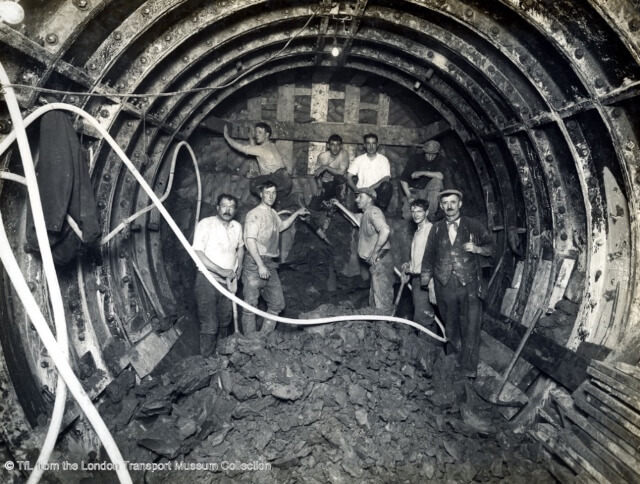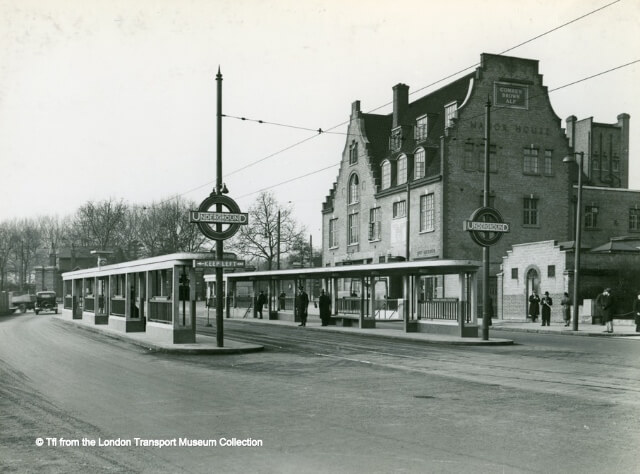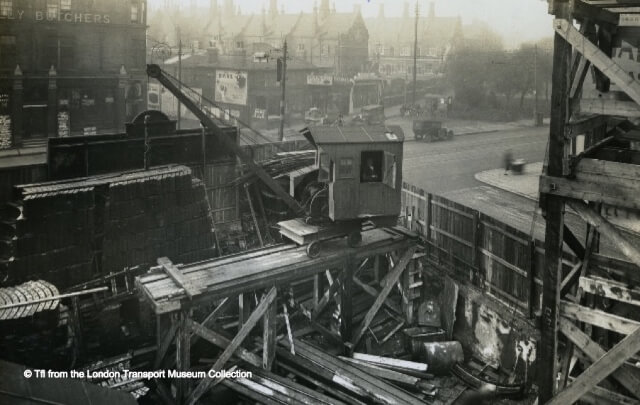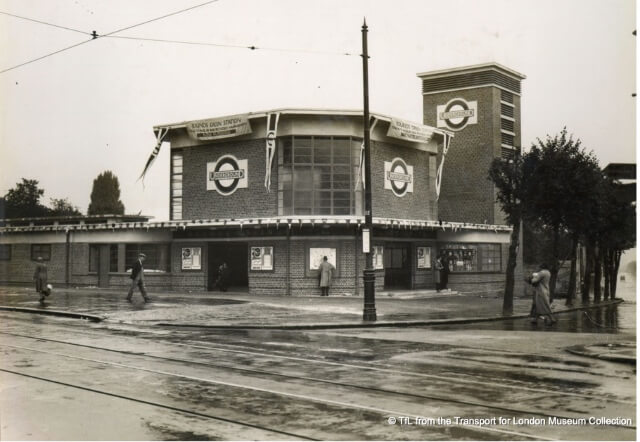
As we’ve seen, Parliamentary powers to build the Piccadilly Line extension were given in June 1930 and the first section of the extension from Finsbury Park to Arnos Grove opened for business in September 1932. Just over two years between conception and opening seems exceptionally speedy by today’s standards when large infrastructure projects seem inevitably to overrun. In fact, The London Electric Company (LER) under the stewardship of Frank Pick had been quietly working on the extension for many years.
Preparatory work
In the Autumn of 1925, the London Electric Company (LER), one of the predecessors to Transport for London, had been invited by the London and Home Counties Traffic Advisory Committee to to investigate and report to the Minister of Transport on extending the Piccadilly Line to Manor House, and on the possibility of extending to Wood Green or Southgate. Officially, the LER’s response was that the problems of finance and bus competition needed to be addressed. Unofficially, they got to work and the New Works and Improvements Committee spent the latter half of the 1920s surveying the land and buying the property needed for the extension.
Frank Pick, a qualified solicitor, spent nearly all of his working life in London’s transport industry. During this period he was the Managing Director of the LER and played a crucial role in the planning and execution of the development of the Piccadilly Line as a whole. Pick is also credited with prioritising architecture and design on the Underground network, commissioning Charles Holden to work on the new stations, and even travelling abroad with him in 1930 to look at new buildings. Pick is also seen as responsible for the distinctive pictorial underground posters, commissioning both established and young artists to design them.
The route
The route was intended to be as close as possible to the midpoint between the GNR and the Hertford line. There seems to have been unanimity from early on that there should be a station at Wood Green. Frank Pick had convincingly demonstrated that traffic levels would be as high as 85,000 passengers per day there, but there was great debate about other station locations.
Local organisations such as the West Green Ratepayers’ Association took exception to what they saw as the neglect of busy areas like Tottenham and Harringay in favour of stations in what were then rural and sparsely populated areas like Southgate and Arnos Grove. There was internal recognition of this difference within the LER but the assumption was that the tube extension would develop rural areas and create passenger traffic as had happened on the outer sections of the Northern and Metropolitan lines.
In the already densely populated areas, discontent remained and there were strong movements for a station on Green Lanes in Harringay and for one on St Ann’s Road. Ultimately, these were both resisted by the LER with the argument that the requirement for a fast line depended on higher speeds between fewer stations. It was hoped that the journey time from Cockfoster to Piccadilly Circus would be under half an hour.

The other argument was that the extension was based on the notion of an integrated transport system. Facilities for connecting buses and trams for the alighting passengers were being built at Manor House and Turnpike Lane as part of the extension, and signage at Wood Green station told people as they reached the top of the escalator when their connecting buses were departing. Frank Pick maintained that everyone would feel the benefit of the extension even if the stations weren’t on their doorsteps because of the integrated design of the system.
Construction
There were nine working sites for the tunnel section – Finsbury Park Tennis courts, Manor House, Woodberry Grove, Colina Road, Turnpike Lane, Lordship Lane Wood Green and Pellatt Grove, Wood Green, Nightingale Road and Bounds Green. Turnpike Lane was the construction headquarters for the whole tunnel section and it was there that the first of the 12ft shafts was sunk in the Autumn of 1930.

Tunnelling went on for 24 hours a day, the only break being from 1430 on Saturdays to 2200 on Sundays. Average progress was approximately one mile of single tunnel a month. On 19 March 1931 new tunnels met the old near Finsbury Park and by October 1931 tunnelling was complete except for the station tunnels at Wood Green and Bounds Green, which were finished by the end of the year.
Opening
In the end, the first section of the extension, running from Finsbury Park to Arnos Grove opened on 19th September 1932. Posters had been designed, flyers distributed and newspaper advertisements widely appeared, all promoting the new extension. Although there was no opening ceremony, the LER did entertain representatives from Southgate, Wood Green, Tottenham and Stoke Newington Councils, MPs and local journalists on the Friday before opening. They were given a tour of the new railway by the Operating Manager, John Pattinson Thomas.

Stations on the extension were opened from 1100 to 1700 on Sunday 18 September to sell season tickets and 30,000 free return tickets to Piccadilly Circus were issued to local residents for use after 10am on the opening day. Searchlights were installed at Bounds Green and Wood Green stations and as darkness fell, their beams met in the sky.
The first train left Arnos Grove at 0523 on Monday 19th September. According to reports, trains were well loaded during the day and in the evening there was standing room only on many journeys. The extension, in part at least, was finally up and running.#
Image Credits
All Images – © Tfl from the London Transport Museum Collection